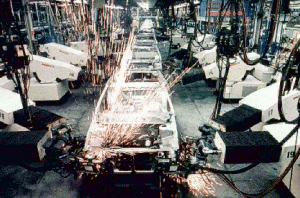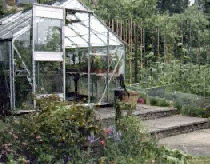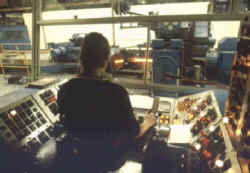| Control Systems | ||||||
The signals sent by a computer to a device are called control signals. An output port is a connecting point on a computer through which it can send control signals. A relay is a switch which can be switched on and off by an electrical signal. It can be used in the device being controlled to switch lights and motors on and off. An actuator is a device which can produce a movement when given an electrical signal. It receives the control signals and converts them into movement. An interface is some hardware, and possibly also some software, that is used to connect two devices or systems to enable them to communicate. Control systems often need interfaces between the computer and the controlled device. This happens if the type of signal sent or received by the computer is not the same type as that of the device. In particular the interface may need to include analogue-to-digital or digital-to-analogue converters.
|
||||||
|
Sensors and feedback A simple control system can work by a processor sending control signals to a device which then responds accordingly. However, in most control systems the computer also receives signals back. These help the processor to decide what to do next. Such signals come from:
A sensor is a monitoring device which measures some physical quantity and sends signals back to the processor. Examples of sensors :
An input port is a connecting point on a computer through which it can receive signals from sensors and switches. Feedback generally means using output from a system to influence the input. Data from sensors is received by the processor and this data helps it to decide what control signals to send. The processor uses feedback to keep the control system stable. Components of a control system. A control system normally requires a processor which has:
|
||||||
|
Application of sensors and feedback. Automatic control of a greenhouse.
Data Capture - The greenhouse has suitably placed sensors to measure -
The temperature sensor is digital but the humidity sensor is analogue. Role of the computer - The computer receives readings from the sensors. Readings from the humidity sensor are passed through an analogue-to-digital converter. It is programmed to check humidity and temperature at 10-second intervals and take appropriate actions eg.
|
||||||
|
Process control
|
||||||
|
Application involving process control. Manufacture of Glass Molten glass has to be cooled at just the right rate - otherwise poor-quality glass is produced. Input :
Process :
Output :
|
||||||




